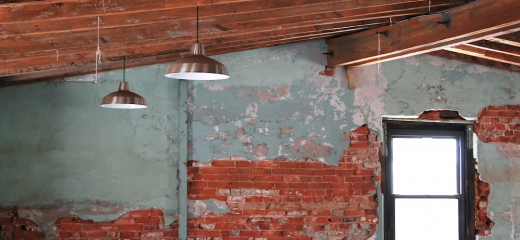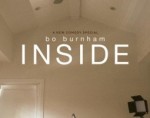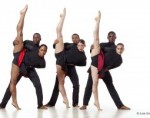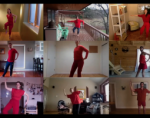
The State of the Studio
by Kat J. Sullivan
Dance studios are being forced to close in Philadelphia. As the economic toll of the COVID-19 pandemic continues to crash like a wave over the city’s artistic network, smaller organizations are being swept out to sea. In the dance field in the United States, where resources are scarce and the work is undervalued at the “best” of times, I can’t say I’m surprised by this outcome. But it doesn’t make it any less heartbreaking to read another announcement from a dance studio that has sunk beneath the water.
Unfortunately for Philadelphia’s dance community, we are accustomed to having dance spaces and other centralizing institutions fold from a lack of systemic support. In 2014, Philly dancers suddenly lost Dance/UP, the local branch of Dance/USA, when the William Penn Foundation pulled its funding without warning. In 2017, the Painted Bride announced its intention to release its physical home in an act of self-preservation. When the building became too costly to maintain, they moved to a “project-based” model. Perhaps there will be a growing trend of arts institutions transitioning from brick and mortar studios to amorphous online entities; as Maddie Hopfield posed in a recent review on tD, “Are decentralized, virtual arts organizations the wave of the future?” What will it mean if our studios supporting body-based art forms become disembodied themselves?
Philadelphia dance is, in many ways, a reflection of the national dance scene; indeed, American dance is in much of the same boat as the whole of American arts. In a sobering article in Hyperallergic, the American Alliance of Museums’ survey results posit that one third of the country’s museums—that’s 12,000 organizations—may never reopen after COVID-19 has passed. Half of the 760 surveyed had already laid off a portion of their staff and diminished their educational programming; for small dance studios operating with less than five staff members and offering only a few public programs per year, these life-vest measures are not options. The article notes that many museums receive less than 25% of their total revenue from governmental support. Philadelphia arts organizations recently breathed a small sigh of relief when Mayor Kenney rethought his plan to eliminate the Philadelphia Cultural Fund, effectively defunding much of the arts, from the city budget in a series of anticipated cuts to fill the financial hole created by the pandemic. Yet, the Philadelphia Cultural Fund, a major source of monetary support for Philly arts and culture, will go into the new fiscal year with only one third of its operating budget.
I spoke with the leaders of three now-shuttered dance studios in Philly: Lora Allen of The Iron Factory, Christa Campbell of Merge Dance Studio, and Keila Cordova of 954 Dance Movement Collective.
Kat J. Sullivan: What were the circumstances that led to your decision to permanently close your space?
Lora Allen: This was not an easy decision. After temporarily closing in March, we secured a small grant and received many generous donations through fundraising. But given months of lost income, additional costs to adhere to CDC guidelines, and the significant repairs and updates the space needed, it became clear that staying open was not the right decision. I also could not take on the financial risk of staying open in a post-pandemic climate where funding for the performing arts is so uncertain.
Christa Campbell: I began to think about permanently closing my space back in November, after the birth of my second child. Having two small children and running my own business without family support nearby proved to be quite a challenge. As you can imagine, the decision to close my business was not an easy one, and even though I had started thinking about it, I hadn’t decided to make it official until after we had to close our doors due to COVID-19. Once the pandemic began, we took our classes online, and I started to see how much of an uphill battle we had ahead of us to reopen safely and successfully. It seems that it was a sign to take this time to step back and focus on family.
Keila Cordova: We originally planned to reopen. We’d already invested in safety features and bought masks to distribute to everyone entering the studio. Then we had planning issues about how we would get through 2020. It forced us to re-evaluate, look at the bigger picture, and pay attention to underlying questions that were there the whole time. It was a blessing. Running a dance studio is a unique service industry. You learn so much from the constant flow of interactions with so many people. For me personally, the thought of wrangling people to respect safety policies at all times felt daunting. In the day to day of regular studio life, it can be a big job just trying to get people to put their empty water bottles in the blue recycling bin instead of the trash can and to put their food stuff in the trash can instead of the recycling bin. If the stakes were higher—as they most definitely are with COVID—would people be able to change and be willing to follow our guidelines, designed to keep everyone safe? Would COVID improve policy compliance? Who knew?
The Iron Factory, Photo: Tori Lawrence
KJS: In what ways will the closure of your studio impact Philadelphia dance and the larger creative ecosystem of the city?
LA: I think most people think of the Iron Factory as a dance space, and that’s what it was initially intended for when we opened it back in 2013. But dancers only made up a small amount of our community. The space was used often by photographers, theater artists, musicians, and wellness practitioners. We also shared the space for weddings, parties, and community events. When we expanded and opened the artist residency space in 2017, artists from all over the US visited The Iron Factory. For our free artist-in-residency programs, we asked all applicants why being in Philadelphia was an important aspect of their residency—this question carried the most weight on the application. It was really important to me that the artists staying here were collaborating with Philly artists, connecting to the city and the people, and exploring how being here impacted their work.
My focus in the last few years was for the space to be research-based, at an affordable price. Our hourly rental rates of $12/hour, and membership rates of $7-$8/hour never increased in the last 8 years. We felt that by providing space that was more affordable, artists could rent the space for longer, use more time researching their work, and feel less pressure to leave the rental with something “finished.”
CC: My mission when opening Merge in 2012 was to provide a drama-free space where everyone felt welcome to learn to dance, regardless of age, experience, etc. I do feel that we were able to successfully carry out this mission, and I know that our closure will take away one more welcoming dance environment in Philadelphia. We also provided many classes for adult dancers, which are harder to find than children’s classes, as well as a company for adults to perform with. I know a lot of our adult students are feeling the loss of our space heavily. We had created such a great community of wonderful dancers and dance families, and I know we will all miss seeing each other and dancing together. The closure of any studio is felt citywide by having one less place to take classes, one less place for someone to find their dance home, one less place to provide healthy competition for other area studios, and one less place for someone to have the opportunity to learn and thrive as a dancer.
KC: Professional dancers need a safe space to do their work. 954DMC has been an important tool for artists for 11 years. We’ve become part of the creative imagination of our community. For some, when they imagine developing a new dance work, play, concert, they visualize that process happening in our space. The closure of our studio shrinks and contracts the fabric of the Philadelphia performing arts’ spatial imagination, and the effects of that could ripple throughout the region for a while.
We don’t just serve Philly. We serve artists regionally in Pennsylvania, Delaware, New Jersey. Geographically positioned at a crossroads, we’ve been convenient for people to convene and create together: a collaboration center. We produced a free, outdoor dance festival for eight years (World Dance Day) that brought free dance classes and performances to Philadelphians of all ages. We initiated bringing Dance for PD to Philadelphia and ran our program continuously for nine years. Another one of our initiatives was an ongoing community dance program designed to create teaching opportunities for developing instructors and to introduce people to dance.
We’ve been the place where so many people experienced their first dance class ever. And where former dancers found their way back to dance. I’m proud of that because I think dance is transformative. We intersect with professional dancers, liberal arts and conservatory dancers in the region; but we’ve also had dancers and dance teachers who have been civil servants, lawyers, chefs, police officers, CPA’s, school principals, social workers, ex-military, psychiatrists, you name it. Dancers aren’t separate from society. We improve the quality of everyday life for members of our community. I wonder at how the reduction of creative movement spaces will affect life in Philadelphia because dancing is cathartic; you get a big release of endorphins, more than from most other physical activities. Right now we’re all going through a time where people need catharsis, help navigating this rollercoaster; and when you can’t have that experience in a positive way, you might not be in control of how that energy leaves you.
Merge Dance Studio, Photo: Andrea Nunez
KJS: Are you viewing this moment for your business as one of transition or ending; a semicolon or a period? Do you plan to carry on your organization in some other manner than a physical space?
LA: The Iron Factory is permanently closed, but I plan on continuing my own artistic work through my dance company allendance and as a collaborator with Project Trans(m)it. My work with Project Trans(m)it investigates how to make work online, collaborating with artists across distance, and using free and accessible resources and platforms. We’ve been working this way since 2014, but it feels so relevant now.
CC: I am considering this a time of transition. My main focus right now is on my children, but I do plan to carry on a few classes for our adult dancers outdoors during this time. I hope to continue offering dance programs at area libraries once library programming resumes, and I will continue to be available for birthday parties and events. I definitely plan to stay connected to dance and hopefully to continue to teach in some fashion. I can’t imagine my life without dance in it in some form.
KC: I see it as a transition for my creative life, dedicating focus to 3 Pony Show and my writing; but as an ending for the 954DMC. I’m interested in rethinking the model and learning from 11 years of serving the Philly dance community. Now I have an imaginary Ph.D. in Dance Studio-ology. I was never interested in running a traditional dance studio, so the space became a habitat for dancers who were curious and open and innovative. As a dance artist, I don’t have room for nostalgia. I have to be very present and pay attention so I can figure out what’s next. That part is exciting.
It’s an opportunity to stop and pay attention. To look back and honor what we’ve accomplished. To look at what’s happening in the world right now and respect that uncertainty. I want to build forward, as we learn more about what the post pandemic future might look like, then to create a plan based in that reality that will serve the artist that I’ve become and the community that I enjoy serving. The space has been a habitat for creative cross-pollination, so I think if another space is in our future, that is something that I would definitely want to achieve again. Dance is woven into the hearts and minds of people you walk by every day. You can’t always spot a dancer by standing next to them on the street or on the subway. Because our mission was “moving people to dance,” we sparked conversations that couldn’t have happened in a traditional dance space.
954 Dance Movement Collective, Photo: Andrew Thompson
KJS: What do you think Philly can do better to prevent these kinds of closures from continuing to damage the dance community?
LA: I don’t think I have the answer to this right now. Of course, having more secured funding to be able to continue to pay our overheads costs during a closure would help.
The people using the space have lost income due to COVID-19, and I think, consequently, artists' needs are going to change greatly. We’re already seeing a change in focus: working outdoors, in larger spaces, online, and in film, and I’m not sure a traditional dance studio will be as needed to the degree it was before.
CC: Philadelphia could do a better job of showing that they value the arts and small businesses by helping them financially through difficult times and by reaching out to them to see what other type of support they could use. Funding from the city during this time was not spread very widely, and I know a lot of us small business owners did not receive any grants from the city, nor did anyone reach out to us to see how they could support us through this time and help us make it through. Also, the ever-continuing conversations about defunding the arts in Philadelphia do not help to make the arts feel very appreciated or secure.
KC: Dance artists have been supporting Philadelphians at such a low cost over the years, bringing movement opportunities to so many. I think the reduction in city arts funding in general is a missed opportunity to make the best investment possible for increasing social harmony during a challenging time for Philadelphians. Artists know how to create maximum impact on money spent. That’s just what we do. I don’t think it’s a stretch to say that there should be some protections offered to creative spaces. And innovation. Philadelphia has vacant spaces that—in a non-pandemic world—could be converted to movement spaces to increase support to the dance community and turn the tide. I think some property development projects have specific requirements for what they include. Why not add an art space requirement? Our space was only 1,140 square feet, but we managed to serve so many aspects of the Philadelphia community. Over the years it included improv, hip hop, tap, postmodern, flamenco, ballet, capoeira, jazz, Bollywood, burlesque, Russian bottle dancing, yoga, Kizomba, Afro-Caribbean, contemporary—and more that I’m forgetting. We brought all these movement styles under one roof and artists witnessed and gained appreciation for movements unfamiliar to them. I think the city needs to recognize the value of these spaces.
--
I reached out to some of the major funding sources for arts in Philadelphia to ask what they planned to do to support Philly’s dance studios and organizations during this economic crisis. A representative from the Independence Foundation said that their organization has had to limit their support for arts and culture going back as far as the 2008 recession; their current focus within the performing arts has been on theater or the larger ballet companies in the city and less on smaller studios and organizations. The performing arts and other cultural sectors are taking massive hits in support, they agreed, and there aren't adequate monetary safety nets. There is still no plan from Congress to extend the $600 unemployment bonus. At the time of publication, the Pew Center for the Arts, the William Penn Foundation, and the Philadelphia Foundation have not responded to requests for comment.
Interviews with Lora Allen, Christa Campbell, Keila Cordova. Email, August 5-13.
By Kat J. Sullivan
August 30, 2020










